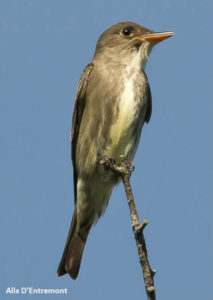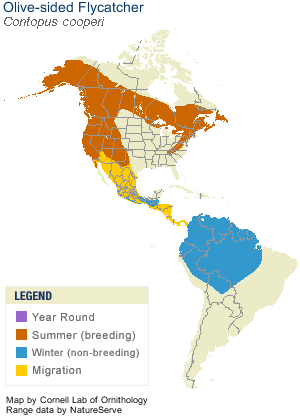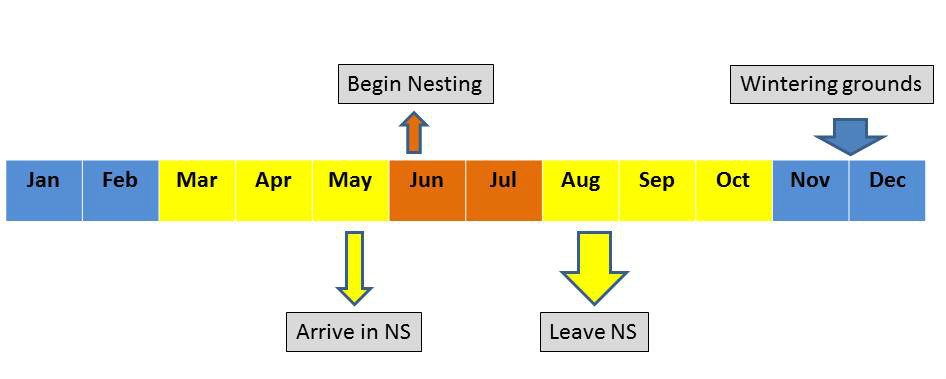The Olive-sided Flycatcher is a medium-sized songbird commonly found in coniferous forest edge habitats. The breeding range of this species spans southern Canada, Alaska, the Yukon, and the western USA. These birds over-winter in northern South America, no farther south than Peru.
Breeding and Life History
Most birds arrive on their North American breeding grounds in mid-May to form monogamous pairs and establish territories. The male Olive-sided Flycatcher rarely leaves his territory, and can sit for hours at a time surveying it from a high perch to ensure no other males encroach of the space chosen for him and his mate. A male will sing to establish and defend his territory, as well as to attract female mates.
Nesting begins by early June. Females choose a nest site and are primarily responsible for nest construction, which typically takes 5-7 days. Most nests are built in coniferous trees (typically spruce), and are placed well out from the tree trunk towards the end of a limb. Both the male and female will aggressively defend a nest against intruders. Clutch size is 3-4 eggs which are incubated by the female for approximately two weeks. Eggs hatch by late June to early July. After an unknown period of growth the young leave the nest. They are not yet capable of flight and remain dependent on their parents for food for up to 7 additional days. Within a week of leaving the nest, the young are thought to be capable of flight and are fully self-sustaining.
Much remains unknown about the nesting ecology of this species, with incubation period, events during hatching, and the growth and development of young being poorly understood.
Olive-sided flycatcher migration phenology with a focus on Nova Scotia. Blue = wintering grounds, yellow = spring/fall migration, orange = breeding grounds.



